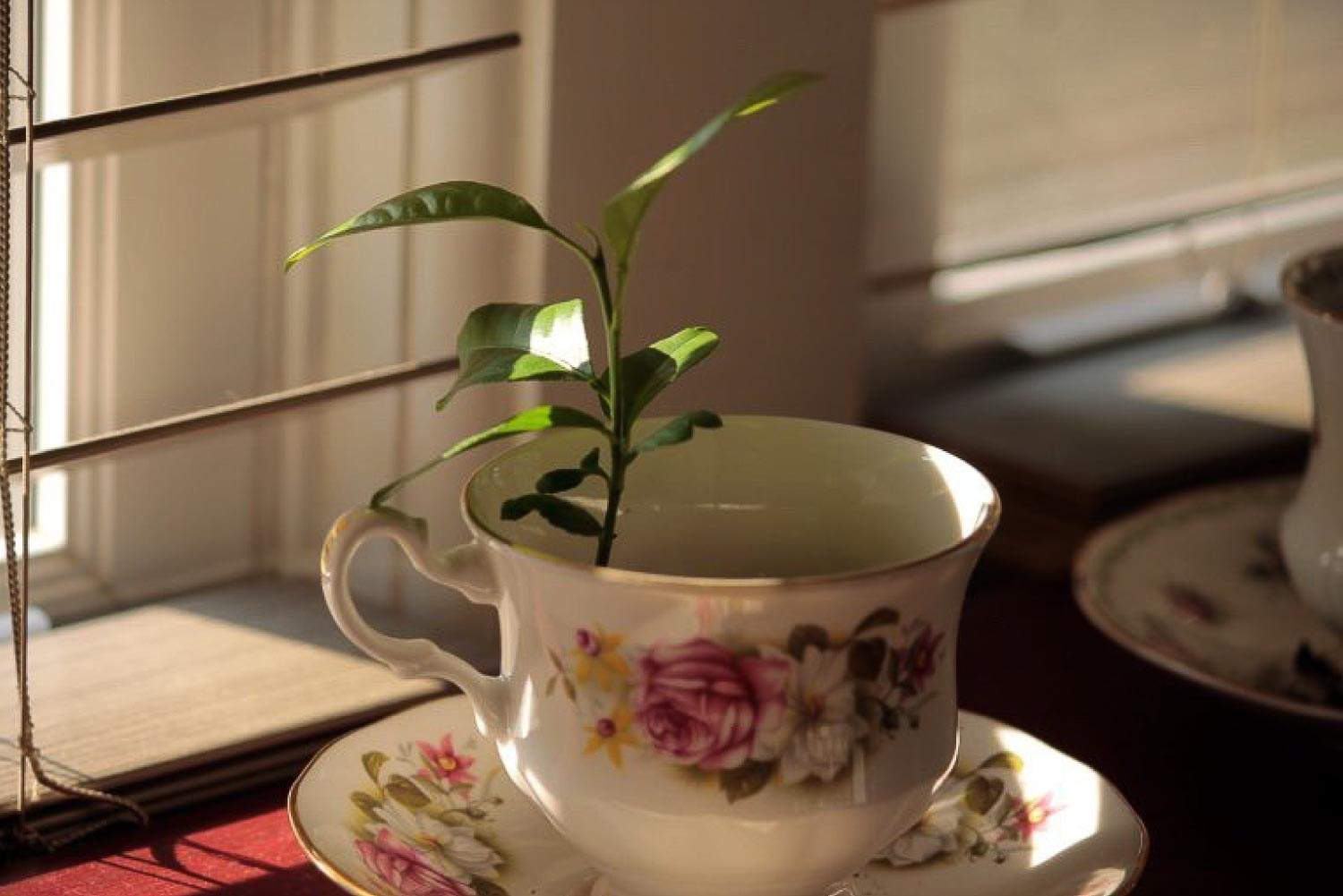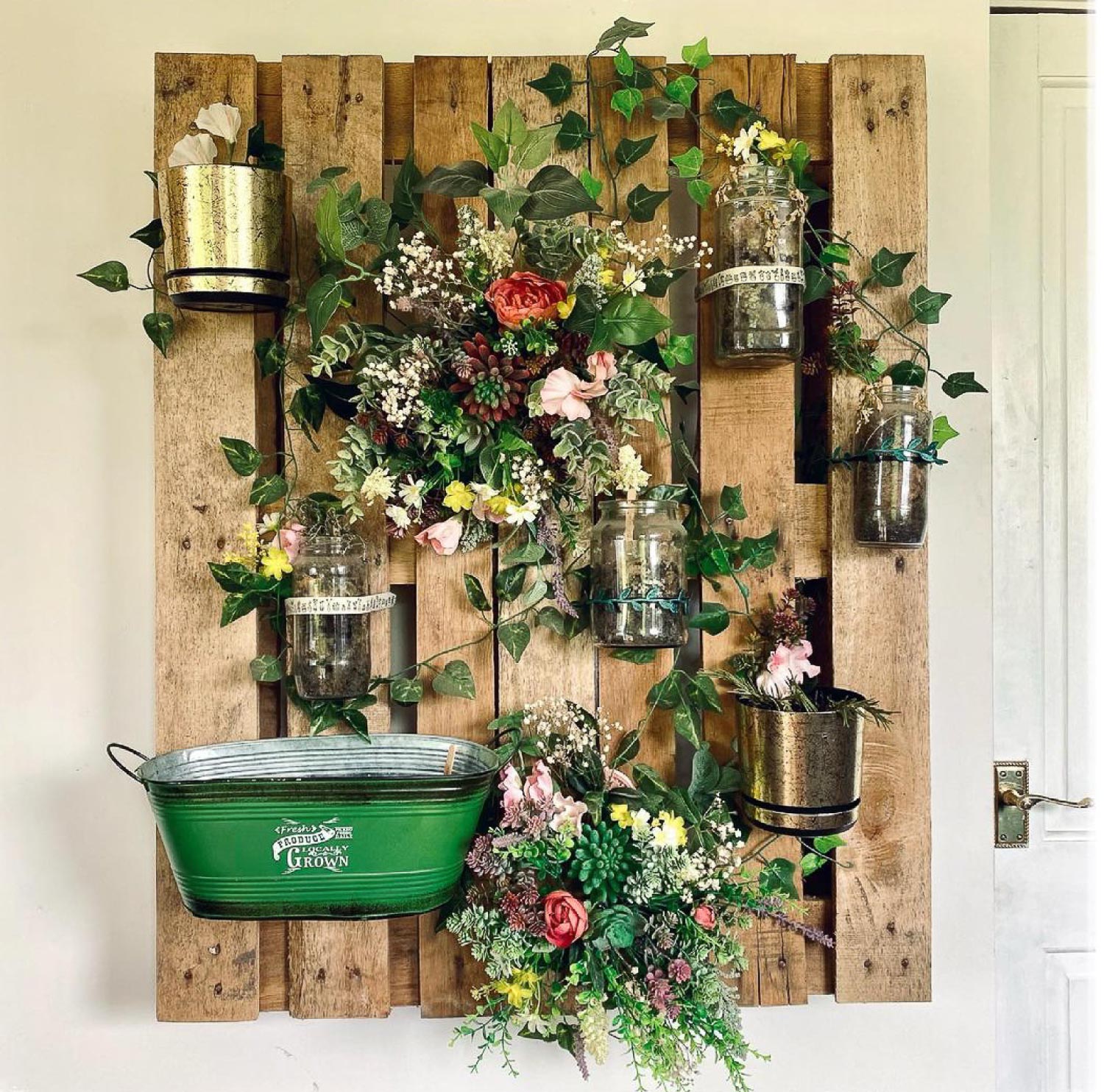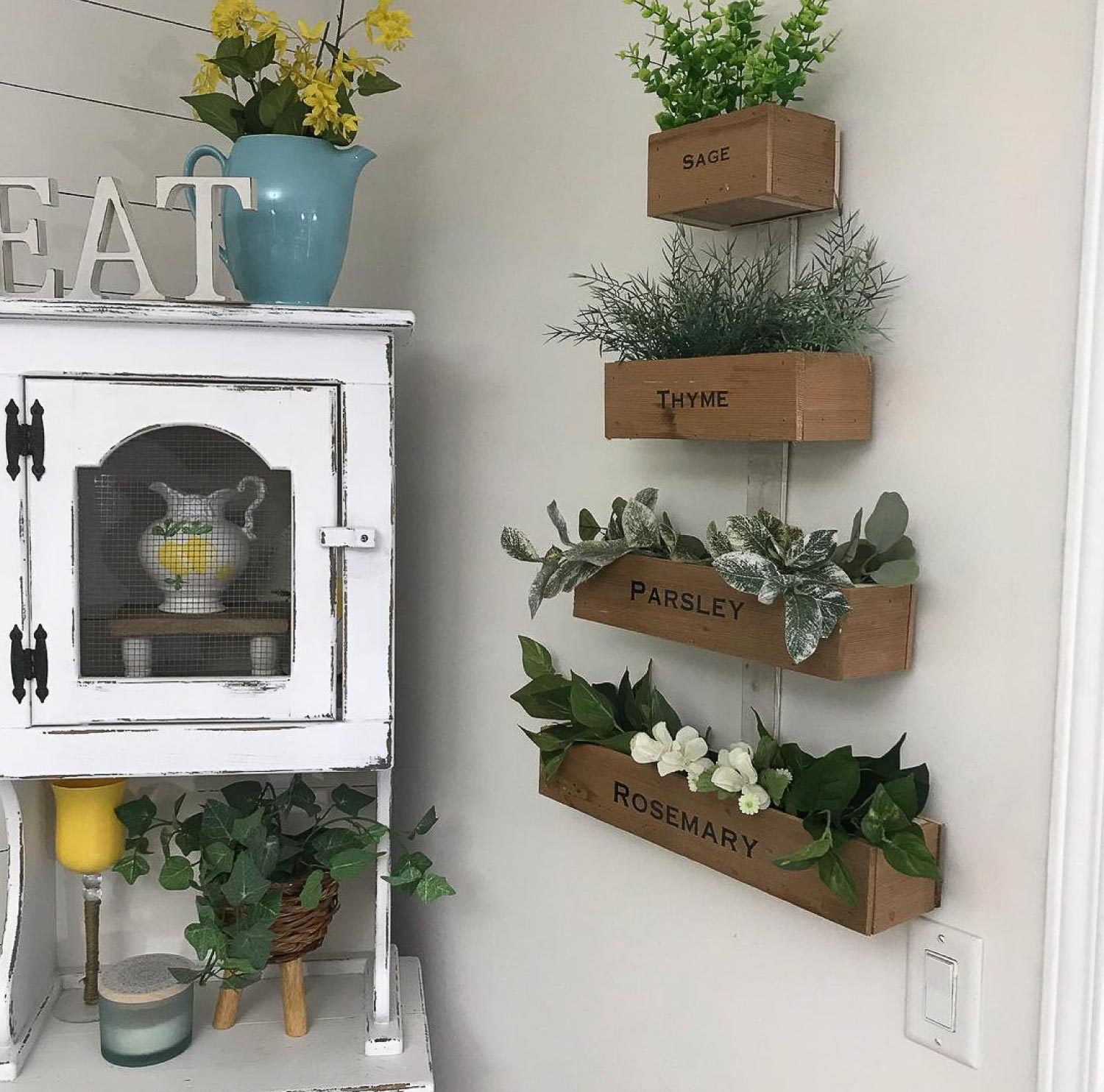10 Clever Ways to Grow Herbs Indoors
These small indoor herb gardens pack a big punch


We’ve all reached for the dried herbs at the back of our spice rack one time or another. It’s easy—but so is growing herbs indoors. You don’t need a big budget, a large backyard, or even a green thumb to achieve this slice of farm-to-table life.
Ready to get started? Pick out a corner of your home and check out these 10 clever ways to grow herbs indoors.
1. Ramp up the Kitsch With a Repurposed Coffee Can

Rather than throw your old coffee cans in the recycling bin, pay homage to your favorite buzzy morning beverage with a DIY herb garden. Following this inspiration shot, you can use a coffee can, a little dirt, and your herb of choice. For extra points, drill a hole in the bottom to provide some much-needed drainage. Keep an eye on your garden’s water levels because aluminum isn’t porous and could overflow.
2. Transform Old Furniture Into Farmhouse Chic

Want to create a rustic farmhouse style in your kitchen or living room? Bring in the herbs—and bring out your old furniture. This rustic planter is made out of a repurposed dresser drawer. You can get the look by using the drawer as a miniature raised garden bed (line it with potting soil) or using individual pots within the drawer, which is easier to maintain if you want to add more herbs later on.
3. Hanging Lightbulb Planters Is a Bright Idea

There are two reasons why hanging lightbulbs are a clever way to grow herbs indoors. First, you can use them as a unique planter by adding a little bit of soil (stay mindful of watering since there’s no drainage). Second, you can turn a single herb plant into an indoor garden by using them as a propagation station.
For this DIY project, you’ll need to hollow out a lightbulb before you hang it up with a piece of rope or macrame. Avoid fluorescent light bulbs because they’re coated in a toxic powder. Always wear gloves and protective eyewear when working with glass.
4. Create a DIY Herb Ladder

This DIY herb ladder fits as well in a balcony garden as it does in the corner of your boho-style living room. The project is simple as long as you know your way around a screwdriver. All you’ll need are three 6-foot bamboo poles, screws, twine, and hanging planters.
“We simply took one of the bamboo poles and cut it into three pieces to use as the rungs on the ladder,” says Kimmy Delahunty, who created the project for her DIY-centric Instagram, Create with Kimmy. She attached the rungs using screws, covered them up with some twine for a boho vibe, and watched her herb plants flourish.
5. It’s Always Tea Thyme Somewhere

Looking to add some cottagecore style to your home? This creative idea for growing herbs indoors is an ideal use for a chipped heirloom you can’t use but don’t want to throw away. Start by taking an antique teacup and adding potting soil. Drill a hole in the bottom for drainage for best results, but use a carbide drill bit for porcelain. If your cup is particularly delicate, skip the hole and water carefully.
6. Fill Up Your Teapot

It’s not a tea party without a teapot. While teacups are an excellent planter option for small herbs, a vintage teapot is ideal for herbs that like to grow big (think: parsley or lavender). You can purchase a teapot planter at specialty boutiques or online, but the easiest way is to shop around your local thrift store and see what you can find.
7. Use a Pallet to Make a Rustic Wall Garden

Living walls are one of the best ways to grow food in a small space. You can hire a local gardener who specializes in hydroponics to install a high-tech living wall for best results. If you want to take the DIY route, you’ll need a shipping pallet and some mason jars. Add a little English ivy to fill out the vertical garden as it grows—just don’t eat it.
8. Take Your Herb Garden Vertical

Planter racks don’t only work for herbs. They can also help you grow larger veggies indoors, like lettuce, sweet peppers, or chard. This DIY project requires you to install shelving on a well-lit wall (preferable near, but not directly under, a window). If you’re nervous about installing shelving, hire a top-rated local handyperson to help you out.
9. Try a Pyramid of Stacked Herb Shelves

These rustic herb shelves make the most of the empty wall space in your kitchen. Stain your shelving so the natural wood grain shows through to get a similar look. You can use plywood to make the box around the shelves, but you’ll need to cut it to size. If you’re not comfortable using a circular saw, hire a top-rated local carpenter to tackle this project.
10. Design a Hand-Crafted Planter

This custom hanging herb cabinet created by New York City carpenter Collin Stewart begs the question: Is there ever a bad time for chalk paint? The answer is no, especially when your taste in herbs might change or you might filter through a few dead plants before you finally get it right.





- Landscapers
- Tree Surgeons
- Gardening Services
- Landscape Architects
- Sod Installation
- Tennis Court Contractors
- Landscape Design
- Retaining Wall Companies
- Grading Companies
- Landscape Rock & Sand Delivery
- Mulch Delivery Services
- Pond Companies
- Artificial Grass Companies
- Shrub Removal & Trimming
- Backyard Design Companies
- Commercial Landscaping
- Koi Pond Services
- Backyard Landscapers
- Trampoline Assembly
- Hedge Trimming
- Pond Services
- Garden Design
- Outdoor Plant Watering
- Putting Greens
- French Drains
- Turf Installation
- Sod Removal Services
- Lawn Repair Services
- Brush Chipping Services
- Hardscape Contractor
- Landscape Rock Removal










